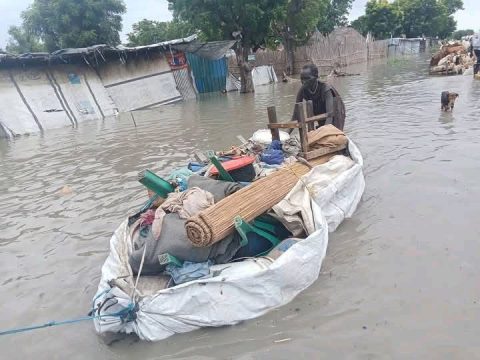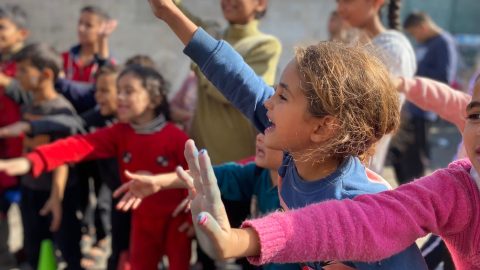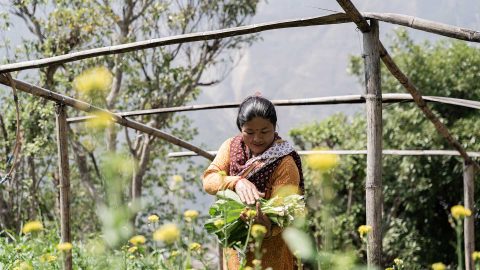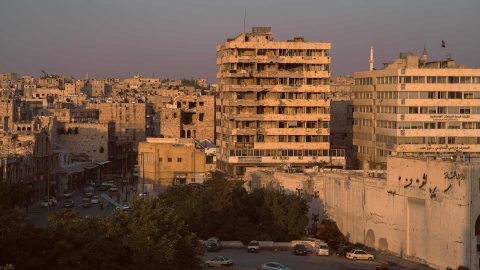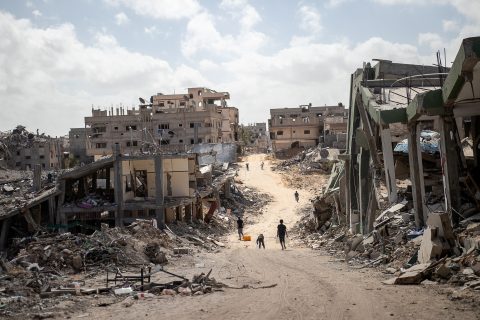10+1 facts about rebuilding
At the end of a conflict, natural disaster or other acute crisis, reconstruction begins. It is not just about physical reconstruction: psychological and social recovery also takes work and time.
Text: FCA
Illustration by Carla Ladau
1 Every crisis is different.
A crisis can be sudden, like an earthquake or a sudden attack, or it can emerge gradually over time, like a drought or climate change. Crises can also be protracted, with people living in chronic insecurity. Given the complexity and diversity of situations, there is no single model or solution for reconstruction that works everywhere.
2 Reconstruction cannot be left to outsiders.
Local people and communities have a key role to play in reconstruction. An outsider cannot always know the specific needs and wishes of local people, for example in terms of food aid content or delivery methods. If a community is not too fragmented, it should also be involved in reconstruction in a meaningful way: so the work isn’t only done by outsiders and locals gain skills and benefits
3 Not back to the way things were, but better.
Reconstruction does not mean that every brick is laid as before. For example, in Ukraine, it may not make sense to build a school the same way as before. It is important to consider the safety of the location and the need for a bomb shelter. Reconstruction can also be an opportunity to make things better and more functional, as long as the local community, experts and local authorities are involved in both decision-making and implementation.
4 Women and young people play a key role.
Some studies have suggested that when women are significantly involved in peace negotiations, agreements last longer and people are more satisfied with the outcome. It is important that generally under-represented groups, such as women and youth, are involved in peace and reconstruction. The needs of marginalised groups must also be listened to in order to build a fair and sustainable social peace.
5 Infrastructure supports social peace.
While reconstruction is about much more than physical construction; buildings and functioning infrastructure do play a huge role in both relief and recovery. When roads are passable, water is available and people can move around to shops or markets, they can be active participants in their own lives, rather than relying solely on outside help. Cash grants, for example, require a functioning market.
6 Psychological recovery takes a long time.
According to the World Health Organisation (WHO), psychological stress is virtually always a factor in emergencies. Many people suffer from depression or post-traumatic stress disorder as a result of crises. Access to mental health services and psychosocial support must be provided in the same way as other health care. Acute help alone is often not enough, as trauma can only manifest itself long after the event.
7 Peace work continues after conflict.
Only sustainable peacebuilding can help to prevent conflicts from escalating and reigniting. Globally, far more resources are spent on crisis response and reconstruction, when the most sustainable option would be to try to prevent conflicts from arising in the first place. This would save both resources and lives.
8 An entire generation – including future generations – could be at risk.
If reconstruction and its psychological aspects are not properly managed, the consequences will be far-reaching. A generation that has spent its entire life focused on survival loses a sense of security and confidence, and violence or isolation may seem the only means of survival. Experience of crisis can affect the mental health and psychosocial well-being of not only current but also future generations.
9 Education is an essential part of reconstruction.
Schooling is a means of maintaining routines, and education also secures the future. Education improves the opportunities for local people to participate in reconstruction.
10 Reconstruction will not fix climate change.
Adapting to climate change is important but not enough. By using nature-based solutions and restoring ecosystems, we can protect the environment and thus build community resilience and a healthier planet. Working with nature, not just adapting to its changes, will help find sustainable solutions to the climate crisis.
+1. Finn Church Aid works together with local people.
In its reconstruction work, FCA takes a holistic view and works to support and assist locals by listening to their needs. The work focuses on education, improving livelihoods and promoting peace. Psychosocial support is an important part of the work.
Jan De Waegemaeker, humanitarian aid specialist at the Finn Church Aid was interviewed for this story. Other sources include FCA’s humanitarian strategy, the World Bank Group’s and UN’s Pathways for Peace report, the World Health Organisation’s mental health in emergencies website and the International Federation of Red Cross and Red Crescent Societies’ Recovery website.

